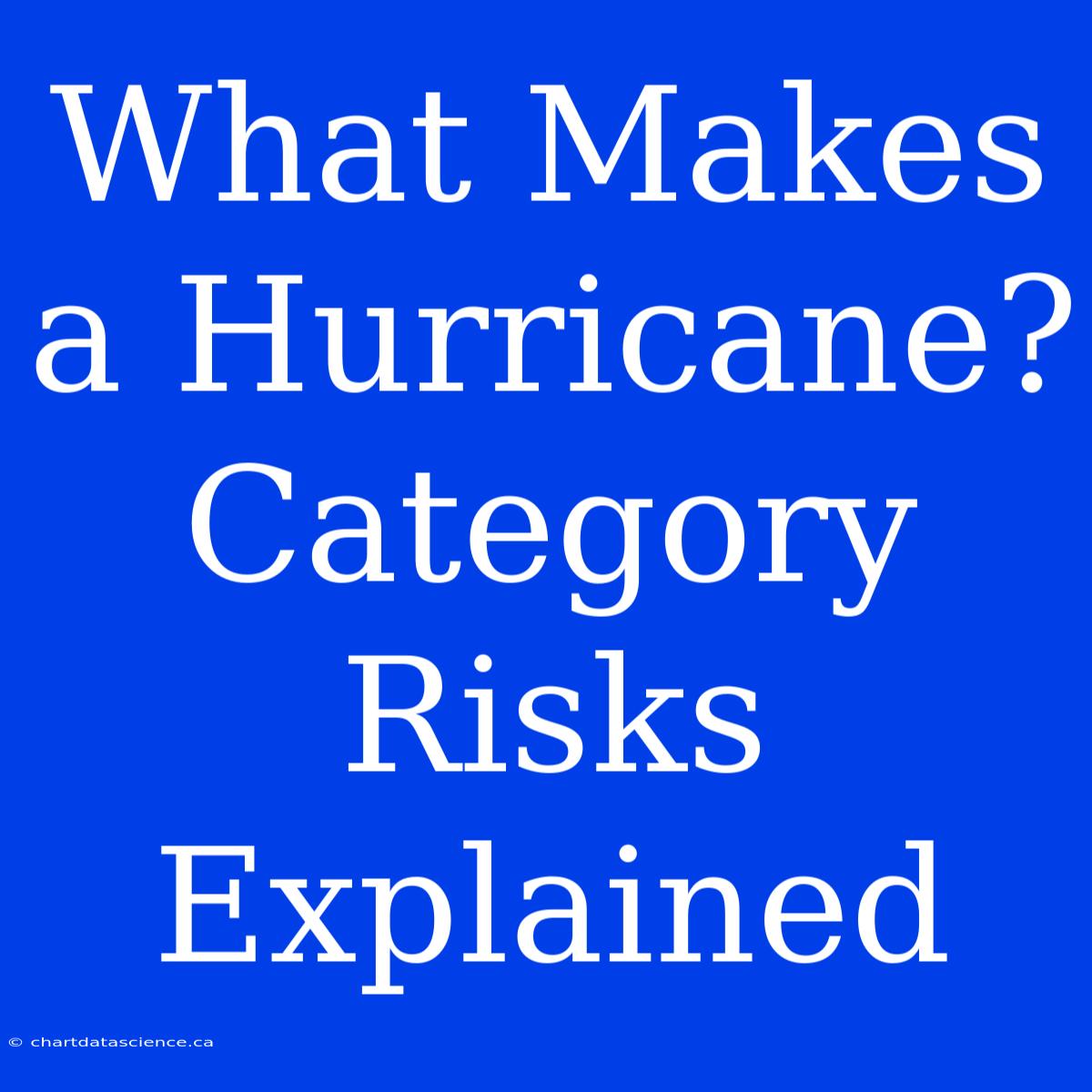What Makes a Hurricane? Category Risks Explained
Hurricanes. They're the stuff of nightmares for coastal communities, bringing with them powerful winds, torrential rain, and devastating storm surges. But what exactly makes a hurricane, and how are they classified? Let's dive into the world of hurricane formation and understand the risks associated with each category.
The Recipe for a Hurricane
Hurricanes aren't just random weather events. They form under specific conditions, much like baking a cake requires specific ingredients.
- Warm Water: Hurricanes need warm ocean water (at least 80 degrees Fahrenheit) to fuel their energy. Think of this water as the oven for the cake.
- Low Air Pressure: A low-pressure area creates a vacuum that draws in surrounding air. This helps the storm spin, just like a rotating whisk mixing your batter.
- Moist Air: This air is crucial to create condensation, releasing more heat and fueling the hurricane's growth. Imagine this as adding extra ingredients to make the cake rise.
- Coriolis Effect: This is the Earth's rotation, which causes storms to spin. This is what shapes the hurricane's iconic spiral form.
The Saffir-Simpson Hurricane Wind Scale
Once a hurricane forms, we need to know its intensity to understand the potential damage. That's where the Saffir-Simpson Hurricane Wind Scale comes in. This scale, ranging from Category 1 to 5, is based on a hurricane's maximum sustained wind speed:
Category 1: Winds 74-95 mph: Minor damage to buildings, trees, and power lines. Think of it as a gentle breeze, but still annoying enough to cause some inconvenience.
Category 2: Winds 96-110 mph: More significant damage to roofs, windows, and coastal structures. This is like the wind getting a little more serious, causing some furniture to move around.
Category 3: Winds 111-129 mph: Extensive damage to buildings, trees uprooted, and widespread power outages. Think of this as a strong gust that can cause some damage to your house.
Category 4: Winds 130-156 mph: Catastrophic damage to buildings, trees flattened, and major flooding. This is like a strong tornado, causing significant damage and requiring a lot of repairs.
Category 5: Winds 157 mph or higher: Devastating damage, entire buildings destroyed, and life-threatening storm surge. Think of this as a violent storm that can completely destroy anything in its path.
Living with Hurricanes: Preparation and Safety
Knowing the risks associated with each category is crucial for coastal residents. Preparation is key!
- Create a Hurricane Plan: This should include evacuation routes, emergency supplies (food, water, first-aid kit), and communication plans.
- Secure Your Home: Board up windows, trim trees, and move valuable belongings to higher ground.
- Stay Informed: Monitor weather reports and heed evacuation orders.
Hurricanes are powerful forces of nature, but with knowledge and preparation, we can lessen their impact. Understanding the formation, categories, and risks associated with these storms can help us stay safe and minimize damage.

